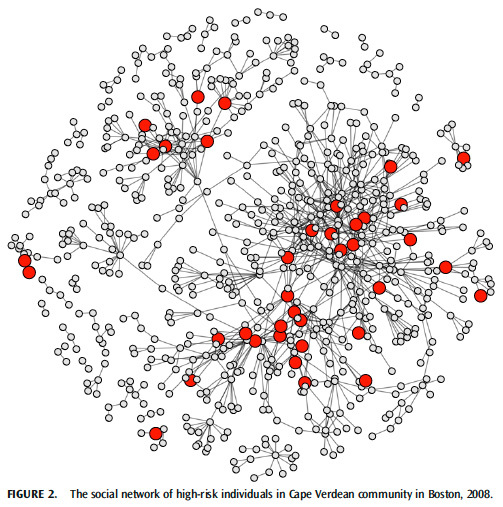Chicago police have compiled a list of 400 alleged future criminals.
For several years, the American police have been experimenting with automatic processing of crime statistics. For example, in 2011, in the city of Santa Cruz (California), they began to use a crime prediction program in an experimental mode. There, on the basis of crime statistics for the past few years, the frequency of each type of crime in different parts of the city is calculated - and routes for police patrols with “hot spots” are drawn up accordingly.

The Chicago police department brought data mining to a new level - and combined statistics with profiling. For example, last year the local press wrote that the police had compiled a watch list . It includes about 400 citizens who, by their profile, are most likely to commit a crime in the near future.
It would seem that one can only welcome the initiatives of law enforcement agencies that are striving to reduce the level of crime and increase the detection of crimes. However, some human rights activists believe that such lists can be dangerous: they pose a threat to privacy and contribute to illegal actions by the police. “I am afraid that such programs create prerequisites for the police to come to any house at any time for any reason,” said Hanni Fakhoury, an attorney for the Electronic Frontier Foundation.
')
In 2009, the US National Institute of Justice announced a grants program for police departments in cities that want to test experimental crime prediction. The Chicago Department, as a city with a high crime rate and good computer infrastructure, won a grant and received $ 2 million. After some delay, the system was launched in 2013.
For the development of the system, a scientific group was attracted under the leadership of Professor Miles Wernick of Illinois University of Technology, who specialized in medical image processing and proactive analysis. According to Wernicke, the search for anomalies in the results of mammography is fundamentally similar to the search for patterns in the profiles of tens of thousands of questionnaires that the police make for everyone seen in the offense. He explains that the key factor is not so much the identity of the perpetrator as his connections with other suspicious citizens. Social graph is compiled on co-drives and other features.
For example, the graph below shows a fragment of a social network of people who are at high risk of becoming victims of murder. The red marked the victims of murder for the year. You may notice that the closer you are to those killed in the graph, the higher your own risk of becoming a victim.

The crime prediction program in Chicago is still in its early stages. According to informed sources, the police have so far made personal visits to less than 60 citizens from the list with 400 names.
The developers refute the accusations of "racist profiling" and insist that the data analysis is carried out absolutely objectively and without bias.

The Chicago police department brought data mining to a new level - and combined statistics with profiling. For example, last year the local press wrote that the police had compiled a watch list . It includes about 400 citizens who, by their profile, are most likely to commit a crime in the near future.
It would seem that one can only welcome the initiatives of law enforcement agencies that are striving to reduce the level of crime and increase the detection of crimes. However, some human rights activists believe that such lists can be dangerous: they pose a threat to privacy and contribute to illegal actions by the police. “I am afraid that such programs create prerequisites for the police to come to any house at any time for any reason,” said Hanni Fakhoury, an attorney for the Electronic Frontier Foundation.
')
In 2009, the US National Institute of Justice announced a grants program for police departments in cities that want to test experimental crime prediction. The Chicago Department, as a city with a high crime rate and good computer infrastructure, won a grant and received $ 2 million. After some delay, the system was launched in 2013.
For the development of the system, a scientific group was attracted under the leadership of Professor Miles Wernick of Illinois University of Technology, who specialized in medical image processing and proactive analysis. According to Wernicke, the search for anomalies in the results of mammography is fundamentally similar to the search for patterns in the profiles of tens of thousands of questionnaires that the police make for everyone seen in the offense. He explains that the key factor is not so much the identity of the perpetrator as his connections with other suspicious citizens. Social graph is compiled on co-drives and other features.
For example, the graph below shows a fragment of a social network of people who are at high risk of becoming victims of murder. The red marked the victims of murder for the year. You may notice that the closer you are to those killed in the graph, the higher your own risk of becoming a victim.

The crime prediction program in Chicago is still in its early stages. According to informed sources, the police have so far made personal visits to less than 60 citizens from the list with 400 names.
The developers refute the accusations of "racist profiling" and insist that the data analysis is carried out absolutely objectively and without bias.
Source: https://habr.com/ru/post/213887/
All Articles